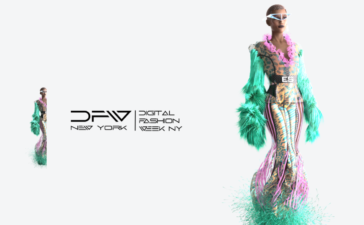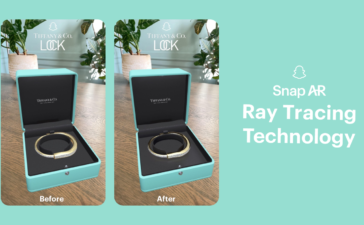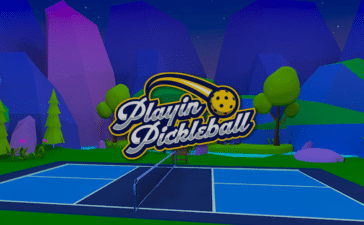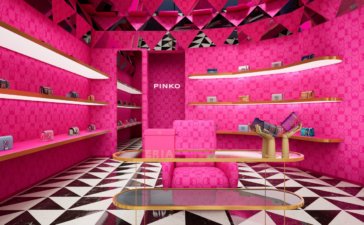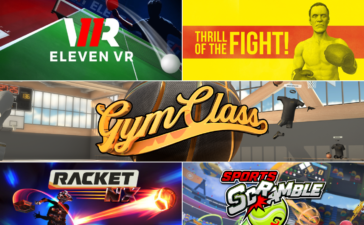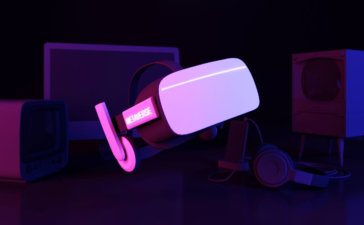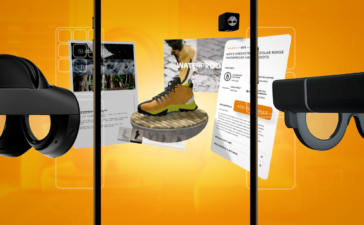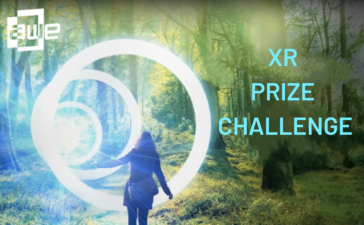Recent technological advancements have pushed the envelope of what modern technologies are capable of. Furthermore, these innovations have greatly changed the way users interact with such technologies. Given that our technological advancements, consumer behavior, and tech trends continue to evolve at breakneck speed, being aware of metaverse and XR predictions can help you better prepare for the future.
Dispelling Common VR Myths and Misconceptions
Despite the relatively widespread acceptance and use of virtual reality technology, there are still some myths and misconceptions that surround it. Unfortunately, such beliefs stem from a misunderstanding of the technology and how it works. Some of the most common myths and misconceptions surrounding VR include the following: it always causes motion sickness and virtual reality is solely applicable to games.
We talked with The Park Playground CEO Peter Vindevogel, who shared his thoughts on these myths and misconceptions, shedding light on virtual reality technology.
“Virtual reality is often perceived as being limited to the world of gaming. Although gaming is certainly a great use case and example of what immersive VR experiences can deliver, the possibilities are endless,” said Vindevogel.
He gave examples of some applications of VR that have nothing to do with gaming, such as house tours, and meetings.
“Virtual reality is transforming industries and has so much to offer in terms of exposing people to new experiences they otherwise wouldn’t be able to enjoy. Gaming is just one aspect of VR and tends to be individuals’ first tangible insight into the possibilities of the metaverse,” he adds.
According to Vindevogel, one of the most common misconceptions surrounding VR is that it causes motion sickness, which can prevent people from trying out new experiences. He adds that one of the main causes of motion sickness in VR experiences is poor latency.
“When a delay in latency occurs, your real and virtual movements no longer match, knocking the equilibrium out of balance and causing ‘cybersickness.’ The problem stems from, and is also alleviated by, the equipment being used to deploy the virtual reality experience and how those experiences are designed. It is very easy to induce motion sickness if you are not carefully taking this into consideration,” Vindevogel explained.
The good news is that with the wealth of knowledge and experiences available today, VR experiences are becoming increasingly inclusive. Furthermore, developments in the VR industry are improving existing technology. Thus, in the future, VR users are less likely to encounter such issues.
2023 Metaverse and XR Predictions That Could Shape the Future of Tech
1. More Widespread Use of VR for Location-Based Entertainment
According to Vindevogel, VR technology will continue to evolve and become more widely adopted. Thus, it’s likely that we will increasingly see the technology being used for location-based entertainment (LBE) in the coming years. That’s because VR is capable of creating such immersive, interactive, and social experiences.
“Overall, the future looks bright for VR as a technology that will continue to redefine entertainment and other industries. As VR technology improves and becomes more accessible, more brands and creators will explore and experiment with the potential of VR,” said Vindevogel. He pointed out that the location-based entertainment industry had seen steady and promising growth, and was expected to grow at a CAGR of 12.4% until 2028.
Vindevogel adds that the growth of VR in the context of LBE is due in part to how VR and AR are capable of providing users with more exciting ways to bring their vision to life, making the technology suitable for visitor attractions. “It provides lifelines for theme parks and museums by reinvigorating the experience and eliminating potentially negative factors such as queues and crowds,” said The Park Playground CEO.
2. The Use of VR in the Field of Education
Vindevogel goes on to say that VR will be a useful tool in the field of education. According to him, the technology can be used for training and delivering first-hand experiences to learners.
“This is the first time in history where we are not only able to build muscle memory for these high-skilled and high-risk situations from anywhere in the world without much-specialized equipment but immersive experiences could offer a better way for students to retain and be excited learning about any subject,” he said.
3. More Accessible Developer Tools
VR solutions are becoming more popular in commercial settings and it’s expected that developing such solutions will become simpler in the coming years.
As pointed out in one of the Unity Developers’ blog posts, aside from the exponential rise of development businesses, we’re also seeing more developer tools, such as the Unity and Unreal engines, becoming more accessible. An iteration of Unreal Engine (Unreal Engine 5) is already being used to develop applications for a range of VR devices.
4. Growing Use of XR Devices in Enterprise Settings
It’s likely that we’ll see more XR devices being used in enterprise settings. This is already one of the metaverse and XR predictions that’s slowly becoming a reality. Thus, it’s probable that in 2023, we’ll be seeing more XR devices being used as workstations in the office.
And while they won’t be seen as replacements for your laptops, PCs, or even smartphones, these XR devices can augment their functionality, particularly for users who regularly engage in XR environments.
5. More XR Consumers and More XR Content
In an interview with Circuit Stream’s Dejan Gajsek, he shared that we’ve seen several major investments in immersive tech, particularly Meta. These investments are seen as foundations for future content and hardware, and with consumers purchasing more immersive tech hardware, it’s likely that we’ll be seeing more VR and AR content.
He goes on to share that the success of the Quest 2 will fuel interest in the new Quest 3, which should will be released in 2023.
According to Gajsek, “Anyone that decided to buy from the Oculus store or use Meta’s products essentially becomes a ’subscriber‘ in Meta’s user base. Once the base becomes big enough, the platform becomes extremely interesting for marketers and advertisers.” He expects Meta to continue pushing the narrative for VR.
Gajsek also believes that the gaming aspect of VR should expand. According to him, the launch of the VR add-on for the PlayStation VR 2 will likely expand the use of the PS5 console in the context of VR games. This, he thinks, will prompt the growth of the number of VR consumers.
6. Metaverse Tech Will Be Built and Used by a More Diverse Group of People
John Payne, CEO of Croquet, believes that metaverse technologies will be built and utilized by more diverse groups.
“Given the potential reach of metaverse technologies, it’s imperative that these technologies be built for people with a wide range of backgrounds and abilities,” he told us. “As solutions for identity in the metaverse become more varied, people will be able to express themselves safely in the way that feels most comfortable for them. Safety and anti-harassment tools will be built into platforms as they become more decentralized.”
He goes on to say that these metaverse platforms will become open to asynchronous content, as not all users can be found online at the same time. This could indicate that in the future, we will see the evolution of ghost avatars, rich notes, and other time-independent interactive content.
Payne also believes that metaverse will happen much faster than everyone thinks, by gaining traction via 3D worlds in traditional websites. “Millions of virtual 3D spaces and worlds embedded in the web interoperably with existing sites will collectively form a significant portion of the larger interoperable metaverse,” he said. “The metaverse is an evolution… the next generation of the Web… not a revolution.”
7. More Collaborations Among Key Metaverse Players
In the near future, it’s highly likely to see more big names in the tech industry coming together to create new solutions. These collaborations are also a result of the need to create an open and interoperable metaverse.
We’re already seeing key metaverse players coming together in the collaboration between Meta and Microsoft. To continue providing users with seamless software experiences and improved productivity and collaboration capabilities, Microsoft and Meta have teamed up to bring Mesh for Teams to Meta Quest headsets. Moreover, the two companies are looking at ways to incorporate Xbox Cloud Gaming into the Meta Quest Store. This is predicted to change the way gamers stream and interact with games across a variety of devices, including smartphones and the Meta Quest platform.
8. AR Apps to Increasingly Leverage AI Tech
To create more immersive virtual environments, AR applications must be able to collect a wealth of information about the user’s surroundings. Through the use of artificial intelligence, app developers can streamline how their program processes algorithms and data. Moreover, they can leverage AI to come up with more accurate results. Thus, it’s likely that we’ll see more AR apps making use of AI tech in the future.
“I believe the biggest breakthrough will come in e-commerce and merging technology with AI. There are Shopify widgets where you can ‘try’ a new pattern in your living room, or virtually place a piece of furniture,” shares Gajsek. “Consumers only have to click on buy, and the product is going to be delivered to their homes. AR will decrease the amount of friction when it comes to the buyer’s process and drive impulsive buys.”
Furthermore, Croquet’s Payne believes that AI will help speed up content creation. Tools like DALL-E and ChatGPT are becoming more widely available to more people. Furthermore, people are becoming more receptive to their use. Given that creating high-quality content can be a time-consuming endeavor, these AI tools will enable users to access a more cost-effective and faster way to create content.
9. Companies Will Offer More Immersive Experiences for Their Workforce
One of the significant metaverse and XR predictions will most likely impact the workplace. Aside from the increased use of XR devices in enterprise settings, it’s likely that we’ll see more companies offering immersive experiences to their employees.
According to a PwC report, businesses are likely to become “metaverse power users.” This is supported by a 2022 PwC survey, which shows that 42% of business leaders are planning to use the metaverse to provide onboarding and training for their employees. This is followed by 36% who shared that they’re planning to use the metaverse for interactions with colleagues, as well as for creating virtual content for their audience.
We’re already starting to see companies trying to recreate real-world activities in virtual worlds, including shared virtual workspaces and having access to collaboration and productivity tools. It’s also likely that businesses will expand their use of XR tech and the metaverse. For example, we may see more metaverse-specific interactions for customer service or digital recreations of physical establishments.
While nothing is set in stone yet, it’s probable that businesses that are unable to adapt to emerging tech trends may lose not only their competitive edge but also access to growth opportunities.
10. VR Will Become a Larger Part of Our Lives
According to Mesmerise CEO and co-founder Andrew Hawken, VR will play a larger and more sustained role in our lives, as other major tech companies are poised to introduce new wearable tech.
“Now that the rush of VR interest spurred by the pandemic has passed, we’ll enter a new era of sustained development and investment in the space. Just as the invention of the browser played a key role in the development of the internet, we expect a similar outcome as we embrace the metaverse’s role in operating as the interface of Web3,” Hawken told ARPost.“In 2023, we’ll see the fall of walled gardens as other players like Apple, Sony, and Magic Leap bring to market new headset iterations that advance spatial computing as a whole, and as a result, a slow upward trajectory of an optimized virtual reality experience.”
The Park Playground’s Vindevogel adds that virtual reality will increasingly grow to become a part of our daily lives.
“As the line between the digital and real world becomes increasingly blurred, virtual reality won’t just be simply putting on a headset to game with your friends – it will become a part of everyday life,” he said. “However, the level of immersion – whether it’s augmented reality (AR), mixed reality (MR) or completely virtual – will depend on the situation.”
He cites some examples of how VR and AR can be used in our daily lives, such as when someone is trying on makeup to see how it suits them or when a homeowner takes a virtual tour of their future property, instead of just looking at pictures on a website.
“And while the metaverse presents itself as cartoonish and obviously augmented, we’re approaching a reality in which wearable headsets will replace screens, and video conferences will become much closer to real-life situations,” said Vindevogel. Augmented, virtual, and mixed realities bring extra layers to the reality we’re already familiar with, so as time goes on, the digital world will blend more and more into our everyday lives.”

